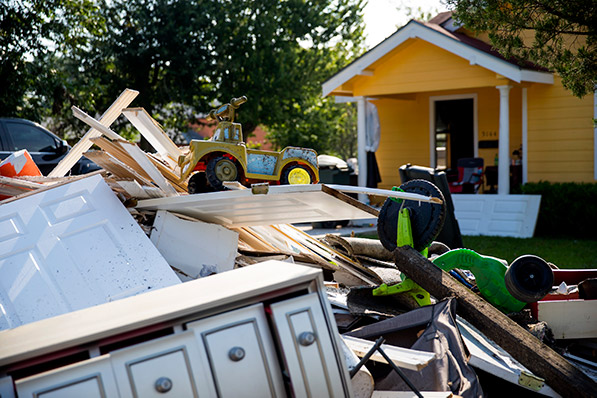 In light of the recent devastation caused by Hurricane Harvey, we want to remind builders and contractors of certain best practices and laws that apply to the industry as a whole and specifically for disaster remediation services.
In light of the recent devastation caused by Hurricane Harvey, we want to remind builders and contractors of certain best practices and laws that apply to the industry as a whole and specifically for disaster remediation services.
In 2011, wildfires ravaged over 40,000 acres of Texas land located in Bastrop and Grimes counties. In addition to those wildfires, Texas has experienced tornadoes, hail storms, floods and hurricanes on a regular basis. As a result, residential, commercial and industrial properties and structures required construction remediation. While many honest and hardworking Texas construction companies were there to help, some communities were plagued by unscrupulous contractors, referred to as “storm chasers” who took money up front and failed to perform services as promised. In response to the misdeeds of these storm chasers, the Texas Legislature enacted the Disaster Remediation Contracts Statute which affects contractors who engage in remediation construction projects stemming from a natural disaster.
The law was passed in 2011 by the Texas Legislature and is included in Chapter 58 of the Texas Business & Commerce Code. The law applies to disaster remediation contractors, which are identified as those engaged in the removal, cleaning, sanitizing, demolition, reconstruction, or other treatment of improvements to real property performed because of damage or destruction to that property caused by a natural disaster. A natural disaster is defined as widespread or severe damage, injury, or loss of life or property related to any natural cause, including fire, flood, earthquake, wind, storm, or wave action, that results in a disaster declaration by the governor or respective county judge.
Advertisement
This means that any construction remediation project related to a natural disaster falls under this law. After Hurricane Harvey landed, Governor Abbott declared at least 43 counties as disaster areas. As such, the law impacts a significant and large area of Texas and the contractors that are in and near these counties.
While the law was designed to protect homeowners and consumers, often it is the builder, remodeler and contractor that needs assistance, guidance and direction in such challenging circumstances. The construction industry has made a concerted effort to render aid and assist many homeowners and families, and yet even in these times of need, it is recommended that a clear and direct line of communication (as well as terms) be confirmed from before the project begins. Therefore, there are several areas to take into consideration:
- Builders, remodelers and contractors would be well served to follow the regular and normal industry procedures such as using the TAB form contracts. While homeowners are in a rush to get the work begun, it is recommended that a written contract be executed by both contractors/homeowners prior to the commencement of work to ensure that you do not waive your lien rights on the homestead.
- The scope of work should be clearly outlined and the liabilities assumed clearly defined in the written contract. For instance, a builder, remodeler or contractor should be careful to avoid assuming mold testing and mold remediation when they are only performing reconstruction services. In that regard, the use of the special addendum to the written contract is a good way to clearly establish which party will be responsible for the clearance testing before the reconstruction begins, and what representations are being relied upon and by whom.
- Another recommended practice is to ensure that a good escalation clause is included in any contract; the TAB form contracts contain such clauses. It is currently unknown what will happen to the price and supply of building materials (such as concrete, sheetrock, insulation, etc.) but the pricing could radically increase based on demand. Some of the anecdotal evidence shows that process may increase by at least 20% in the near future.
- Additionally, labor and manpower may be scarce. It is recommended that strong independent contractor agreements be used and insurance programs verified before retaining any laborers or subcontractors.
Finally, construction projects are often plagued with hard feelings and emotions. Strong and repeated communication with the contractors and/or homeowners is encouraged. Clear communication on timelines and scope of work can manage expectations and mitigate against disputes. With that in mind, there are many other good practices to consider in remediation construction projects and, therefore, contractors are encouraged to contact their attorney or trade organizations to obtain guidance.
ABOUT THE AUTHOR:
 Ian P. Faria is a construction lawyer and office managing partner for Bradley Arant Boult and Cummings, LLP in Houston and serves clients throughout Texas, Oklahoma and several other states. He volunteers as outside general counsel for the GHBA and is active in the construction industry.
Ian P. Faria is a construction lawyer and office managing partner for Bradley Arant Boult and Cummings, LLP in Houston and serves clients throughout Texas, Oklahoma and several other states. He volunteers as outside general counsel for the GHBA and is active in the construction industry.

